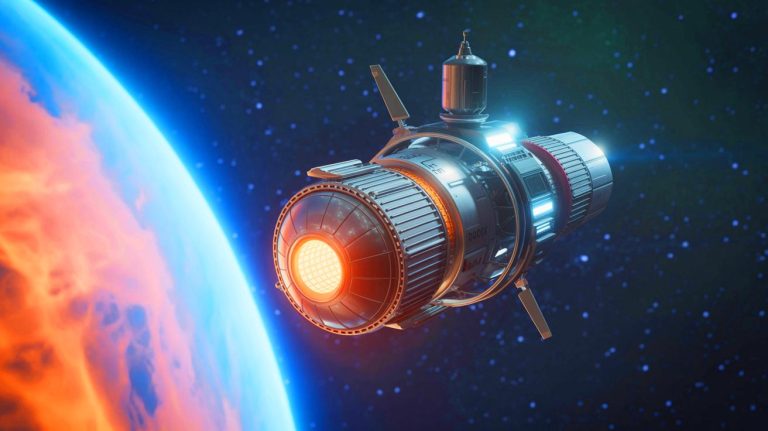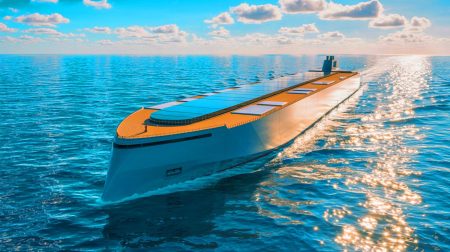| IN A NUTSHELL |
|
In a groundbreaking development, Japan is on the verge of revolutionizing deep space exploration with its innovative nuclear battery technology. By harnessing the power of radioactive waste, this cutting-edge battery is designed to provide energy for space probes for over a century, offering a reliable alternative to solar power in regions of space where sunlight is scarce. As the Japan Atomic Energy Agency (JAEA) collaborates with the Japan Aerospace Exploration Agency (JAXA) and the National Institute of Advanced Industrial Science and Technology (AIST), the potential for exploring asteroids, distant planets, and the dark side of the Moon is becoming increasingly feasible.
A Collaboration with JAXA and AIST
The development of this novel nuclear battery is a collaborative effort led by the Japan Atomic Energy Agency (JAEA) in partnership with the Japan Aerospace Exploration Agency (JAXA) and the National Institute of Advanced Industrial Science and Technology (AIST). These organizations are pooling their expertise to create a prototype of the battery system by early 2029. The collaboration aims to leverage the strengths of each institution, combining JAEA’s nuclear technology expertise with JAXA’s space exploration capabilities and AIST’s advanced industrial science knowledge. This joint effort is expected to propel the development of a specialized power source that can operate in the harsh conditions of space, ensuring the success of future missions.
The involvement of government-affiliated organizations not only enhances the project’s credibility but also underscores Japan’s commitment to pioneering advancements in space technology. By focusing on the development of a nuclear battery, Japan is taking a significant step toward reducing its reliance on solar energy for space missions, thus paving the way for long-duration explorations beyond the reach of sunlight.
The Role of Americium
At the heart of this revolutionary battery technology is americium, a radioactive element that results from the decay of plutonium in spent nuclear fuel. Unlike plutonium, which faces stringent legal restrictions in Japan, americium provides a viable alternative for powering space probes. Although it produces less decay heat compared to plutonium, americium offers significant advantages due to fewer regulatory constraints and its ability to supply energy over extended periods.
According to Masahide Takano, a senior researcher at the JAEA’s NXR Development Center, americium-based batteries have the potential to deliver almost permanent power to space probes. This capability is vital for missions to distant celestial bodies where constant power supply is crucial for the operation of communication devices and sensors. The use of americium not only addresses legal challenges but also provides a sustainable solution for powering space exploration technologies.
Securing Americium for the Battery
To ensure a stable supply of americium for its nuclear battery project, the JAEA has devised a method to extract the element from uranium-plutonium mixed oxide (MOX) fuel. This fuel is already available within the agency’s possession, serving as a critical resource for the americium extraction process. The ability to secure americium from existing nuclear research materials highlights Japan’s innovative approach to resource management and sustainability.
Moreover, the JAEA has developed a technique to bake americium into pellets mixed with additives and encase them within metal pins. This method guarantees that the americium remains safely contained, even in the event of a launch-related explosion. This safety measure is crucial for ensuring the secure handling and transportation of radioactive materials during rocket launches, thereby minimizing potential risks associated with space missions.
Demonstration of the Technology
In a significant milestone, the JAEA has successfully demonstrated the potential of americium by using it to power light-emitting diode (LED) lights. Through the conversion of americium’s decay heat into electricity using semiconductor-based technology, the agency has proven that americium can be employed for reliable, long-lasting power generation. This experiment marks a critical step forward in validating the feasibility of americium as a power source for space exploration.
The demonstration not only showcases the practical application of americium but also underscores Japan’s capability to innovate and adapt existing technologies for new purposes. The success of this demonstration is a promising indication that the nuclear battery technology is on track to meet its objectives, offering a sustainable and efficient power source for future space missions.
Development Timeline and Future Prospects
The JAEA is diligently working towards completing the prototype of this compact and lightweight nuclear battery by 2029. The goal is to create a battery that can withstand the extreme conditions of space, including its vacuum and the intense temperature fluctuations experienced in proximity to celestial bodies. The collaboration between JAEA, JAXA, and AIST aims to ensure that the new power source is both durable and efficient, capable of supporting extended space exploration missions in areas where solar power is not feasible.
As Japan continues to push the boundaries of space exploration, the development of this nuclear battery holds immense potential for future missions. By providing a dependable energy source for space probes, this innovation could redefine the possibilities of space travel, enabling humanity to explore the farthest reaches of our solar system and beyond. What new frontiers will this technology help us discover as we venture further into the cosmos?
Did you like it? 4.5/5 (22)










Wow, a 100-year battery? That’s like the Energizer Bunny on steroids! 🐰🔋
Isn’t using radioactive waste risky? How do they ensure it’s safe for space missions?
Solar power better watch out! 🌞 But can this tech really compete on Earth?
What happens if the battery leaks during a launch? Sounds scary! 😨
How sustainable is this nuclear battery compared to other energy sources?
Wow, the JAEA is really pushing boundaries. Kudos to them! 🇯🇵
Why isn’t plutonium being used if it’s more powerful?
Could this innovation help reduce space debris somehow?
I’m skeptical. Sounds like sci-fi to me. 🤔
This is amazing! Japan is leading the way in space tech. 🚀
Would love to see a comparison of this nuclear battery with traditional solar panels.
Is there a risk of nuclear contamination in space?
Thank you for shedding light on such an innovative topic. Truly fascinating!
100-year battery? My phone barely lasts a day! 😂
Why 2029? Can’t they speed up the prototype development?
This is a game changer for space exploration! Can’t wait to see what they discover. 🌌
I hope they have a plan for disposing of these batteries after 100 years.
This could be the future of energy. Thanks for the enlightening article!
Are there any international regulations on using americium in space?
I’m curious, how much does it cost to develop such a battery?
This sounds like a great opportunity for international collaboration in space exploration.
Is this technology viable for use in satellites as well?
How does the energy output of americium compare to solar power?
Are there any environmental concerns with extracting americium?
I can’t even imagine a 100-year power source. This is mind-blowing! 🤯
Will this technology be shared with other countries, or is it exclusive to Japan?
What are the potential risks if this technology fails in space?
How do they plan to test the durability of these batteries in space conditions?
Japan is really stepping up its game in the space race! 🏁
Are there any ethical concerns with using nuclear waste in this way?
Hope this doesn’t lead to an arms race in space tech. 😬
Is this technology scalable for larger missions or just for probes?
How does this project affect Japan’s energy policies on Earth?
Why wasn’t this reported on sooner? Seems like a huge deal!
Can americium be used for anything else besides space probes?
When will we see this technology used in consumer products? I want a phone that lasts a century! 📱
There is no “dark side of the Moon.” There’s the far side, but it’s just as sunlit as the side that faces Earth.
There is no dark side of the moon.
Nuclear thermoelectric batteries have been around since the 60’s or before, they are powering the still working space probes that are beyond Pluto. The Soviets used them to power buoys out at sea and remote weather stations. The only new thing about these is that they use Americium and instead of thermocouples they might use thermophotovoltaic technology.